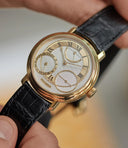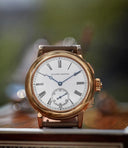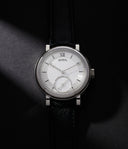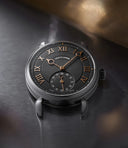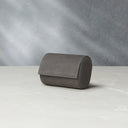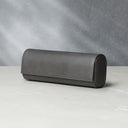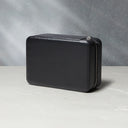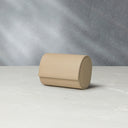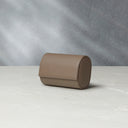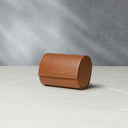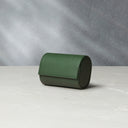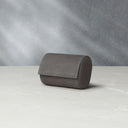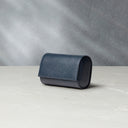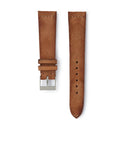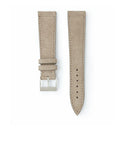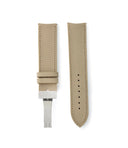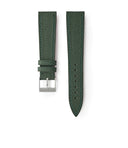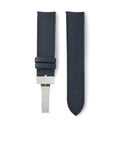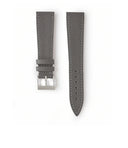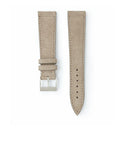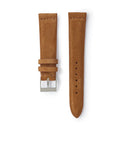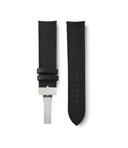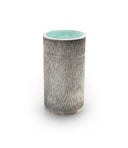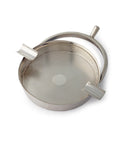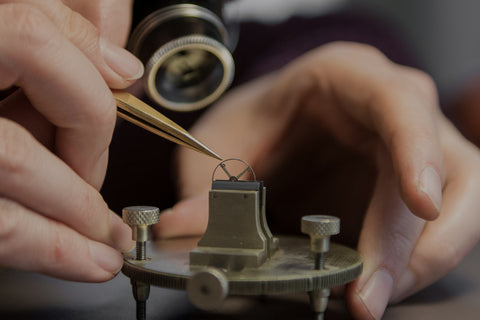Moritz Grossmann, currently in its 16th year as a modern brand, is named after pioneering 19th century Glashütte watchmaker Karl Moritz Grossman. He is not only known for the clocks, pocketwatches and marine chronometres he created but for founding the German School of Watchmaking (which closed in 1992).
In 2008, watchmaker Christine Hutter resurrected the historic name and the brand started producing watches from 2010. The brand today is known for its highly professional atelier, fine finishing and limited output.
This Tremblage series, created in rose and white gold as well as in stainless-steel, marked the brand’s 13th year. It was initially restricted to eight pieces in each metal. It is part of Moritz Grossmann’s Benu Heritage line, which as the name indicates, takes inspiration from the past.
Central to its offering is its dial which hides craft beyond the craft that lends the watch its name. The dial is crafted from German silver dial, an alloy known for its signature warm shade. The dial is hollowed out around the brand mark, the Breguet-style Arabic hours as well as the chemin de fer minute and subsidiary seconds tracks. Each detail is then brought into sharp focus by hand tools. The tops of the brand mark and chapters are polished to a mirror effect. Then begins the process of hand-hammering, or tremblage, with an artisan striking a burin with a small hammer, applying even pressure to individually create the pattern of indentations over the course of many hours. In total, all this dial work can take several days to finish.
The rich texture of the dial is in tension with the finely formed and rounded, cathedral-style hands that have been heat-treated to a brownish-purple hue. The bases of the hours and minutes hands are beautifully bevelled and polished. The overall effect is classical to the hilt, while still possessing the bright lustre of a modern watch.
The rose gold case measures 41mm across, standing just under 12mm tall. The bezel is rounded and minimal, holding within it the boxed sapphire crystal. The midcase is subtly rounded. From this part flows the long and robust lugs. They are faceted and have a subtle concave detail to their outer profile. They stand 20mm apart and are furnished with a black, wide-grained leather strap secured with a signed rose gold pin buckle. The exhibition caseback, secured by screws is engraved with the brand mark, place of origin, serial number and precious metal hallmarks.
Another interesting detail is the sequence of actions to set the time. A result of a proprietary mechanism, it involves gently pulling on the crown, which snaps back to its original position flush with the case. This stops the balance wheel, allowing the wearer to set the time precisely. Once this is done, depressing the pusher at 4 o’clock unlocks the balance once again. Then turning the crown serves to wind the mainspring.
This trait of the calibre 100.1 is just one of its charms. The movement is predictably Germanic and finely finished. Crafted from German silver, a prominent mainplate dominates the view, and wears a frosted finish, with the brand name, Glashütte mark, jewel count and serial number free hand engraved on it. The mainspring wheel is solarised while the click spring and the ratchet wheel are black polished. The baseplate wears a frosted finish too. The jewels, notably, are sapphire rather than rubies. The visible jewels are secured in gold chatons, including the one on which the large balance wheel pivots.
The architecture of the calibre closely resembles the likes of Grossman’s Lever Chronometer movement No. 5306, down to the inclusion of the micrometer screw. Mounted transversely on the balance bridge, the thread of the screw is coupled with the fine point of the index tail. Turning the screw moves the index tail along a finely graduated scale, allowing for very precise adjustment of the active length of the hairspring to correct any deviation in linear timekeeping.
Both balance and escapement bridges are engraved by hand in the floral style typical to Glashütte watchmaking from the 19th century. The hand engraving is deftly executed, at once delicate and deep, and demands closer inspection.
The watch comes with its outer and inner boxes as well as its original bill of sale and warranty paperwork from 2022.
The Tremblage is perhaps one of the finest examples of a contemporary, hand-finished watch made in small numbers. That it remains something of an open secret is a blessing for true enthusiasts of classical watchmaking.
































































































